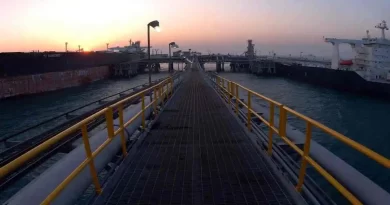Tsunami Alert in Japan after multiple earthquakes
Japan experienced a series of seismic events, with a total of 21 earthquakes exceeding a magnitude of 4 after a significant 7.4-magnitude earthquake struck the country earlier on Monday.
Following this powerful seismic activity, which centered in the central part of Japan, tsunami waves measuring up to 3 meters surged along the west coast. Specifically, Wajima in Ishikawa Prefecture recorded tsunamis exceeding 1.2 meters, as reported by Japan’s national broadcaster NHK.
This marks the first instance of a “major tsunami warning” since the 2011 earthquakes in northeastern Japan. Such warnings are declared when the anticipation is for a tsunami with a height of 3 meters or more.
Other affected areas include Toyama in the neighboring Toyama Prefecture, which reported an 80-centimeter tsunami, and Kashiwazaki in Niigata Prefecture which observed a 40-centimeter tsunami. Tsunami warnings were issued for Niigata, Toyama, Yamagata, Fukui, and Hyogo prefectures, all along the Japan Sea Coast after the earthquakes.
This recent issuance of a “major tsunami warning” prompted the East Japan Railway Company to suspend the Akita Shinkansen line. The Joetsu and Hokuriku shinkansen lines have also halted operations, and there is uncertainty about when services will resume, according to NHK. Additionally, both reactors at the Shika nuclear power plant, operated by the Hokuriku Electric Power Company, are reported to be offline.
As a result of these seismic events after earthquakes, approximately 33,500 households are currently without power, according to news agency AFP. The Japan Meteorological Agency has urged residents in coastal and river areas under tsunami warnings to promptly evacuate to safe locations. Shimoyama Toshihiro, an official from the Meteorological Department, emphasized the likelihood of repeated tsunami waves and advised people to remain in secure areas until the warnings are lifted.
Given the seismic intensity experienced in some areas, there is an elevated risk of landslides and building collapses. The official further noted that earthquakes with an intensity reaching the top of the 7-point scale could persist for about a week, especially in the next two or three days.
Japan’s NHK TV issues a grave warning, urging swift evacuation to high ground or atop nearby buildings as tsunami waves, potentially reaching 5 meters (16.5 feet), threaten coastal areas. Ongoing alerts, even after two hours, highlight the persistent danger.
Government spokesperson Yoshimasa Hayashi assures no irregularities at nuclear plants but stresses the critical need for coastal residents to move away from the approaching tsunami. A 3-meter (10 feet) tsunami is anticipated in Niigata and other western coast prefectures, with smaller waves already hitting the shoreline.
Earthquakes inflict additional damage, triggering reports of smoke in Wajima city and a collapsed house, prompting search and rescue efforts. Bullet trains halt operations, highways close, and burst water pipes contribute to the chaos.
The Meteorological Agency warns of potential major quakes in the coming week, especially in the next two to three days. Tsunami alerts extend to Hokkaido, North Korea, and Russia’s Sakhalin Island. South Korea advises monitoring sea levels for possible changes.
Prime Minister Fumio Kishida establishes an emergency center to swiftly disseminate earthquake and tsunami information, emphasizing immediate evacuations in affected areas. Japan, prone to quakes, faces a renewed crisis reminiscent of the 2011 disaster.








